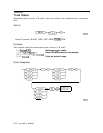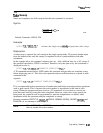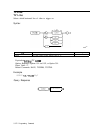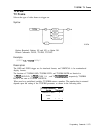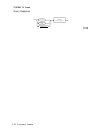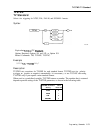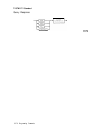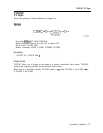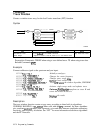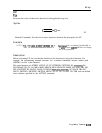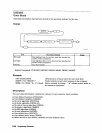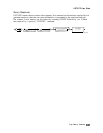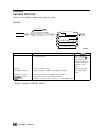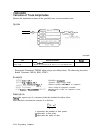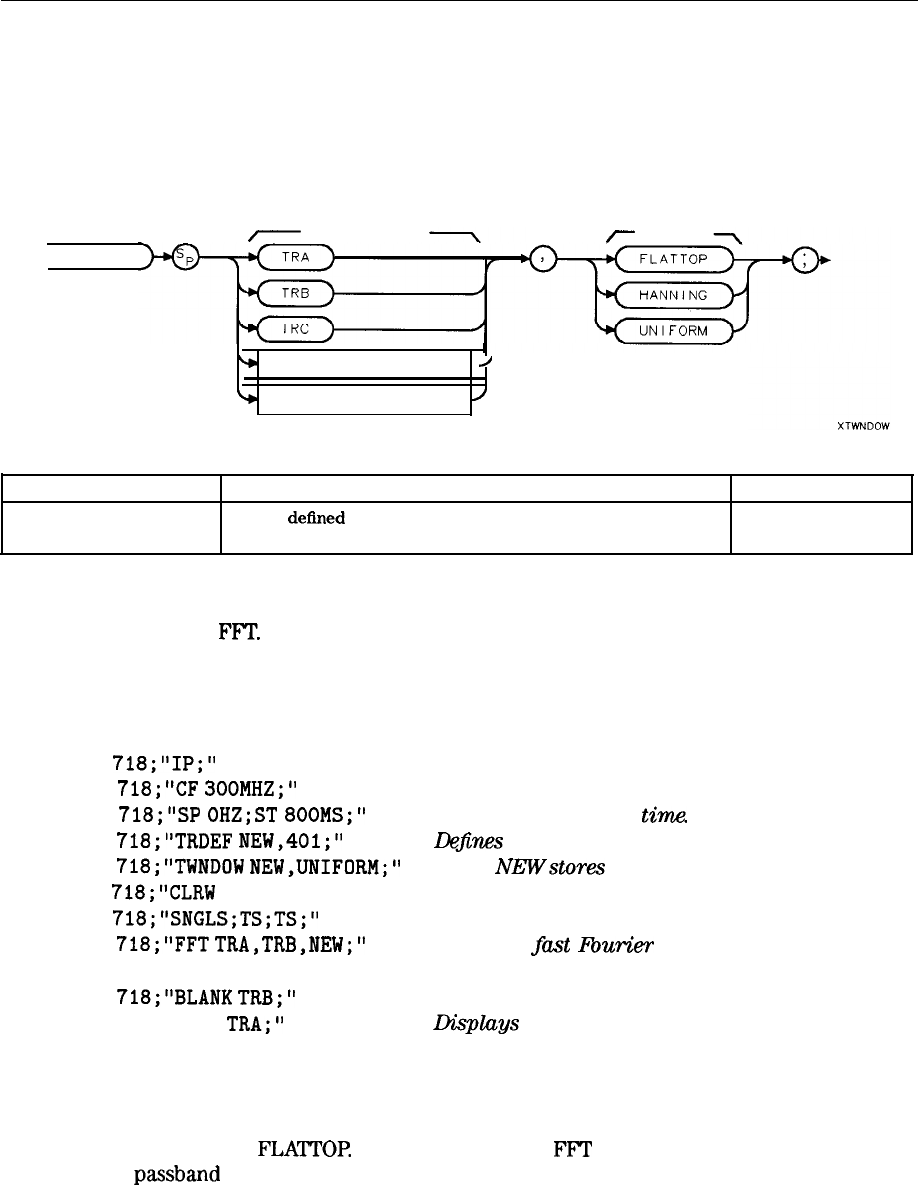
TWNDOW
Trace Window
Creates a window trace array for the fast Fourier transform (FFT) function.
Syntax
TWNDDW
7
destination
r
window
b
user-defined trace
/
b
trace range
/
Item Description/Default
User-defined trace
A
trace
defined
by the TRDEF command.
Trace Range
A segment of trace A, trace B, trace C, or a user-defined trace
Range
Any valid trace name.
Prerequisite Commands: TRDEF when using a user-defined trace. TS when using trace data.
Related Commands:
FFT.
Example
Connect calibrator signal to the spectrum analyzer input.
OUTPUT
718;"IP;"
OUTPUT
718;"CF
300MHZ;"
OUTPUT
718;"SP
0HZ;ST
800MS;"
OUTPUT
718;"TRDEF
NEW,401;"
OUTPUT
718;"TWNDOW
NEW,UNIFORM;"
OUTPUT
718;"CLRW
TRB;"
OUTPUT
718;"SNGLS;TS;TS;"
OUTPUT
718;"FFT
TRA,TRB,NEW;"
OUTPUT
718;"BLANK
TRB;"
OUTPUT 718;"VIEW
TRA;"
Description
Initializes analyzer:
Changes the center frequency.
Changes span, sweep time.
Dq@uxs
a trace called NEW
Trace NE?Vstores the window algorithm, UNIFORM.
Activates single-sweep mode and updates trace.
Performs fast I;burier transform on trace B and
stores the results in trace A.
Displays
the result.
The trace window function creates a trace array according to three built-in algorithms:
UNIFORM, HANNING, or
FLATTOP
When used with the
FFl?
command, the three algorithms
give resultant
passband
shapes that represent a give-and-take between amplitude uncertainty,
sensitivity, and frequency resolution. See “FFT” for more information about these algorithms
and the FFT function.
5-578 Programming Commands



